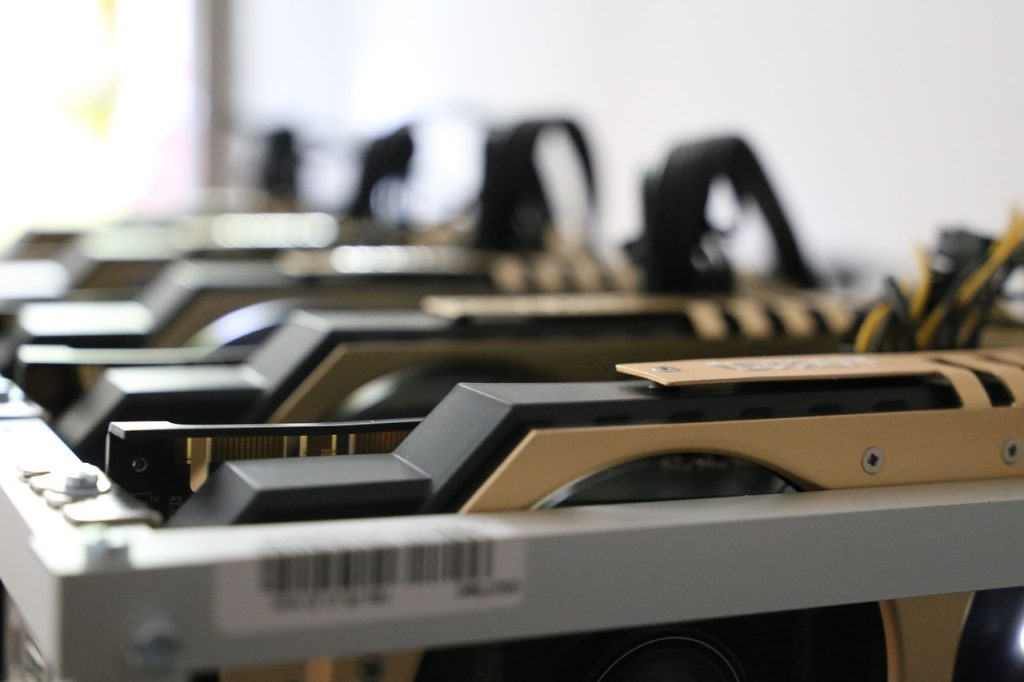
Introduction
Cryptocurrency is a decentralized digital or virtual customariness that uses cryptography for security purposes, so it isn’t controlled by the government or any other institution. Cryptocurrency is a digital representation of value that can be used for various purposes such as transactions, investments, and other financial activities. Here is an in-depth explanation of cryptocurrency:
The History of Cryptocurrency
The cryptocurrency concept goes way back up to the 1980s’ however it was not until 2009 when Bitcoin was released that it gained much attention. Bitcoin was created by Satoshi Nakamoto, a pseudonymous individual or group, and is regarded as the first decentralized digital money. Since then, thousands of other cryptocurrencies have emerged, each with distinctive characteristics and daily usages.
Types of cryptocurrencies
Cryptocurrencies, generally, come in two main kinds; coins and tokens. Coins are autonomous digital currencies with separate blockchains such as Bitcoin and Ethereum; on the other hand, tokens leverage already existing blockchains and are mostly used for particular reasons for example Tether whose value matches US dollars or Euros.
Popular cryptocurrencies

Bitcoin (BTC) is the initial and most well-operationalized cryptocurrency, notable for decentralization and an existing monetary cap of 21 million units.
Ethereum (ETH): The native cryptocurrency of the Ethereum blockchain, used for transactions and smart contracts.
Binance Coin (BNB): A crypto currency used on the Binance exchange for trading and other purposes.
Tether (USDT): A stablecoin pegged to the value of the US dollar, used for transactions and as a store of value.
Solana (SOL): A fast and scalable cryptocurrency used for decentralized finance (DeFi) applications.
How Cryptocurrencies Work
Cryptocurrencies employ complex codes and interconnected ledger technology aimed at guaranteeing and confirming transactions. The procedure normally involves:
Mining: The mining activity refers to verifying transactions and adding tokens to the blockchain and this is usually done by special machines referred to as miners.
Consensus Mechanisms: These are algorithms that are used to ensure the legitimacy of transactions in blockchains, this includes proof-of-work (PoW) and proof-of-stake (PoS).
Smart Contracts: They generally refer to computer programs known as self-executing contracts with the terms of the agreement between buyer and seller directly written into code. They are used for Decentralized applications (Đapps) and transactions.
How cryptocurrencies impact the global economy
Cryptocurrencies can provide financial access to underserved populations and facilitate international transactions thus contributing to financial inclusion.
When cryptocurrencies are used in creating applications that finance without any centralized authority involvement is known as decentralized finance (DeFi). Such applications include lending and borrowing platforms.
Regulatory Frameworks: Governments and regulatory bodies are striving to provide well-outlined rules for the application and exchange of virtual currencies.
Risks and Consideration before venturing into cryptocurrencies
Cryptocurrencies are exposed to very real dangers, including:
- Instability/ volatility: Prices of cryptocurrencies can change ceaselessly and unpredictably.
- Security: Cryptocurrencies are vulnerable to hacking and other security threats.
- Regulatory uncertainty characterizes the regulatory environment of cryptocurrencies as it is presently in a state of evolution and can sometimes be characterized by doubt.
Conclusion
Cryptocurrencies are a dynamic and comprehensive field. It has a lot of purposes and utilities. In spite of the fact that it has countless advantages, it is associated with serious threats and complications. For one to keep up-to-date with the different cryptographic forms of money and how they can affect the worldwide economy, it would be important for one to ensure that he/she remains well informed.
What is crypto mining?
To participate in crypto mining, individuals have to verify transactions in addition to recording them on public ledgers. This is carried out by certain specialized groups of miners who are trying to crack complex mathematical problems involved in the computation of the blocks. Therefore, when a miner finally comes up with a solution for the problem and closes the block’s transactions, they add it to the blockchain to claim a reward in terms of new tokens.
The main goals of crypto mining are to:
- Verify transactions and prevent double-spending
- Secure the network by making it almost impossible to hack
- Circulate new coins into circulation as a reward for miners
How Does Crypto Mining Work?
Transactions are bundled into a block and a mathematical puzzle is encrypted within it.
Miners use nodes known as high-speed computers, in trying different solutions until the correct one is found. The rate of guessing increases with the amount of computing power vested in the miner. They send any correct guesses they make to the network and whoever is the initial one is declared the winner. If it is verified and is found to be correct then other nodes will include it in the blockchain.
The winning miner is rewarded with newly minted cryptocurrency tokens, such as 6.25 Bitcoin per block as of late 2020. The mining difficulty automatically adjusts to maintain a steady rate of new blocks, such as one every 10 minutes for Bitcoin.

Proof of Work vs. Proof of Stake
There are two main consensus mechanisms used by blockchains:
- Proof of Work (PoW) – Used by Bitcoin, miners compete to solve puzzles and are rewarded for their work.
- Proof of Stake (PoS) – Used by some blockchains like Ethereum 2.0, validators are chosen based on the amount of cryptocurrency they have staked. They earn rewards from transaction fees.
Facts about crypto prices
The price of crypto currencies is influenced by a variety of factors, which can be broadly categorized into macroeconomic, fundamental, and technical forces. Here are some key points about crypto prices:
Macroeconomic Factors
Supply and Demand: One of the key factors behind crypto prices is the relationship between supply and demand. When demand exceeds supply in a given cryptosystem, its value usually goes up. On the other hand, when selling exceeds buying pressure within that network, the price drops.
Interest Rates: The crypto market can be impacted by changes in interest rates. This could lead investors away from high-risk investments into safer alternatives due to increasing interest rates hence affecting cryptos negatively while reducing their prices. Conversely, decreasing interest rates imply that investors will also want to put their money in assets with greater risk implying cryptocurrencies among others but not limited.
Economic Recession: During times of poor economic activity, individuals may reduce the amount of investments they make in any asset, cryptocurrencies included, resulting in a drop in their pricing.
Fundamental Factors
Tokenomics: `Tokenomics,’ a short form of token economics refers to the supply mechanism of a given token which is crucial in determining its value. For instance, Bitcoin is limited to 21 million tokens which in turn ensures its value increases over time because of its scarcity. The opposite is true for Ethereum because it has no limit on how much can be produced.
Burn Mechanism: Certain digital currencies may adopt a burn mechanism, where tokens are transferred to an address either nil or unrecoverable in the blockchain thus constricting the flow and stabilizing its value.
Node Count: The number of active wallets in a network, known as the node count, is an indicator of a crypto currency’s strength and decentralization. A higher node count generally indicates a stronger community.
Technical Factors
Market Cap: Market capitalization, otherwise known as market cap, denotes the aggregate worth of a cryptocurrency currently being used, this figure is obtained by calculating the product of total circulation coins with the prevailing market value; it is applied in ascertaining the worth of a cryptocurrency and is crucial in making investment choices.
Trading Volume: Trading volume is like a wild card that can sway crypto prices. Heightened trading activities imply more market movement increasing the likelihood of high prices.
Volatility: Trading in the crypto markets is beneficial as it can either yield trading opportunities or risks that come with it. Consequently, being able to comprehend the factors that instigate this volatility is highly significant when one is making investment decisions that are informed.
Additional Factors
Government Regulations: Government regulations and taxation are capable of impacting the value of cryptocurrencies by a great magnitude. Consequently, there is a high likelihood for an increased centralization and price alterations especially when governments come up with regulations regarding the cryptocurrency industry.
Cost of Production: The cost of producing a cryptocurrency, such as the cost of mining, can also influence its value. If the cost of production increases, the value of the cryptocurrency may rise.
Key Facts About Bitcoin Prices

Bitcoin’s current price is around $69,391.08 as of June 8, 2024. The price has increased by 0.13% in the past 24 hours. Price predictions indicate that Bitcoin hit an all-time peak of $97,481.45 during the month of October 2024. Nonetheless, it is expected that the crypto currency’s value will fluctuate between $50,954.57 and $85,909.19 for the remaining period of 2024.
It is estimated that Bitcoin will have a price between $70,083 and $169,521 by the end of 2024. This may result in an increase of up to 144.74% should it happen. In 2025, the average estimate of the cost for one Bitcoin is $48,219.73 while its maximum price could hit $55,161.63 in January next year.
According to the user-specified predictions, the price of Bitcoin should rise by 5% up to $61,541.95 by 2030. The current market capitalization is at $856.27 billion while within twenty-four hours it reached $20.88 billion in transactions. Volume It represents more than 53.2% of all digital currencies in circulation.
Bitcoin’s price often fluctuates; half of the recent month has shown it in green. The Fear & Greed index is at 77, signifying “Extreme Greed”.
In conclusion, even at this high level now, there can be some suggestions on possible changes during future periods albeit one shouldn’t completely rely on them since history doesn’t necessarily predict the future to be so they are usually accompanied by high levels of uncertainty. Warnings should always be issued during investment decisions due to the high burstiness levels associated with its sine wave pattern.
Facts about crypto ATMS
Crypto ATMs, or as they are called, cryptocurrency automated teller machines, are electronic kiosks that enable humans to purchase or sell crypto currencies using either hard currency or debit cards and are not linked to the normal banks but to the blockchains directly and enable the transaction between themselves as well as the exchanges dealing with cryptocurrencies.
How crypto ATMS work
They connect to the blockchain. This is a ledger where cryptocurrency transactions are recorded as digital information. It just means that these machines can carry out transactions and authenticate them.
User Interface: An ATM user can choose to interact through a variety of means including mobile phone, phone number, photo ID, and accessing a digital wallet. When they want to purchase cryptocurrencies, users simply make use of their mobile’s camera to scan the corresponding cryptocurrency wallet QR code and then key in the quantity they wish to buy.
Processing Transactions: Using the funds or cryptocurrency units deposited, an ATM performs transactions that involve changing hard cash into electronic money or cryptographic assets. This particular deal is later checked through its verification process within the network blocks giving users acknowledgment slips or proof that they made such orders.
Types of Crypto ATMs
One-Way Transactions: There are crypto ATMs that can only handle one-directional traffic, i.e., those that sell crypto currencies but do not allow for their purchase. Often, these devices must use a telephone number (and occasionally necessitate photo identification) as a means of checking your details before you get involved in their operations.
Two-Way Transactions: Two-way transactions can be carried out by a number of crypto ATMs which allow users to buy or sell cryptocurrencies. This is why most of them will ask for a photo ID or some other verification process.

Risks and Limitations of Crypto ATMs
High Transaction Fees: Crypto ATMs often charge higher transaction fees compared to online exchanges, ranging from 5 to 15%.
Limited Crypto Currency Choices: Not all crypto ATMs offer the same cryptocurrencies, and some may only support a limited selection.
Regulatory Constraints: The availability of crypto ATMs can vary significantly depending on the region or country due to regulatory constraints or limited market demand.